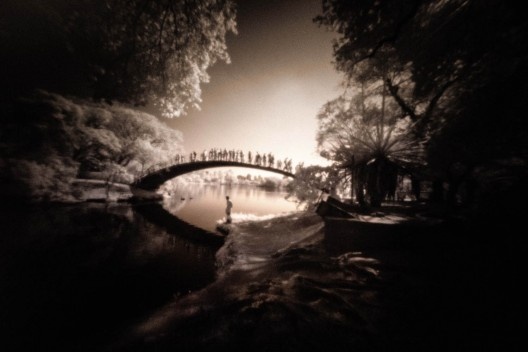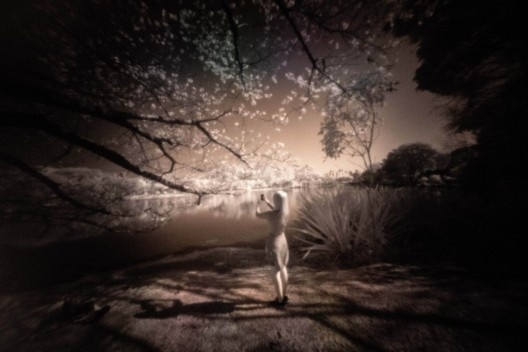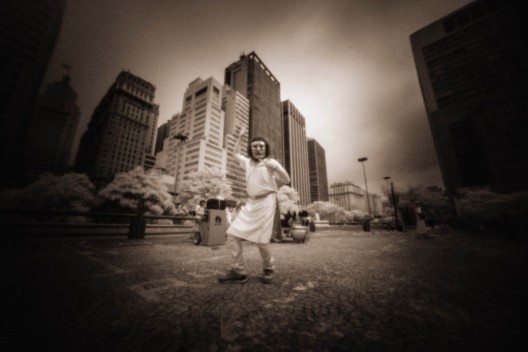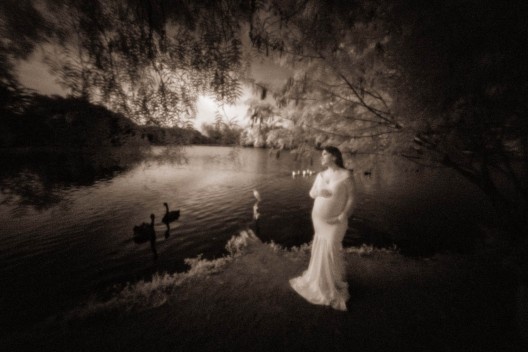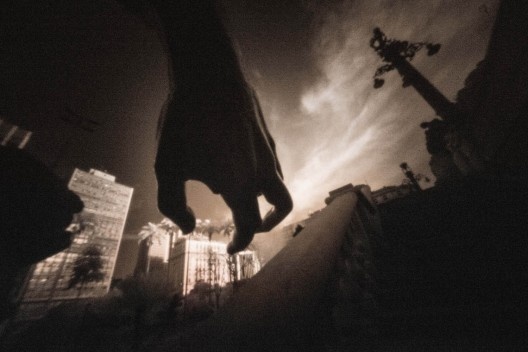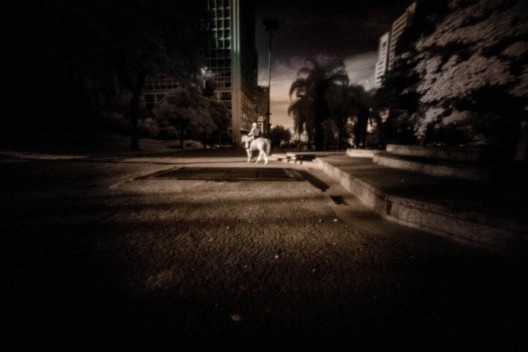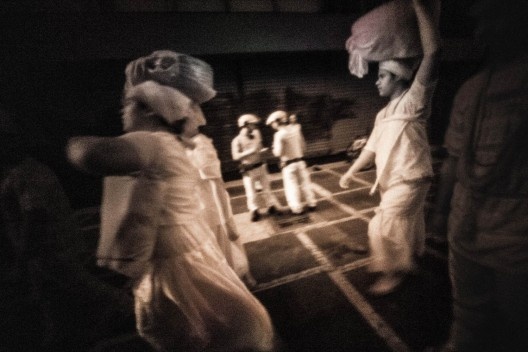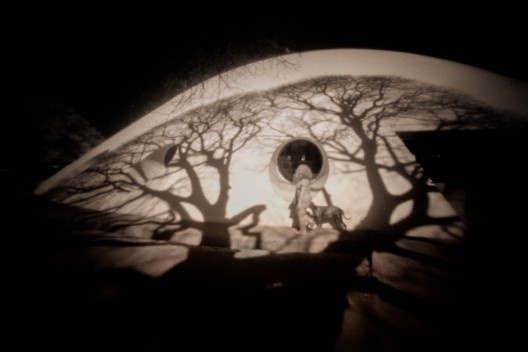In Technics of the Observer, Jonathan Crary determined that vision is more complex than a simple analyzes of changes in representation practices due to the progress of technic. In this study, the author tries to demonstrate how the rupture between the classic and modern models of vision were established. For this purpose, he takes advantage of the description of how Goethe used the darkroom in his work “Theory of Colours”.
The darkroom is a darkened box (or a room) where one ray of light is filtered through a “pinhole”. Described by Aristotle, it was widely utilized in the development of optic and artistic studies. Because, independently of the distance, all objects appear to be equally focused, even though the light projects on the inside of the box, on the opposite side, an inverted image.

Foto Antonio Saggese/ divulgação
That might be the reason Leonardo Da Vinci diligently dedicated himself to the use of this equipment, in order to discover the properties of light, shade and the human eye. For the Tuscan painter, vision was the vertex of the sensory hierarchy, since it was the most important medium used to comprehend all the infinite mechanisms of nature; through it the beauty of the universe is contemplated and all of nature’s works are represented. Da Vinci knew that reality is not objective, but a product of perception; therefore, he was not dedicated to reproducing it, but representing it.
Centuries later, while performing various experiments, Goethe noticed that the darkroom was more than an optic or epistemological system, as it was considered in the past. The scholar perceived, for example, that the human eye still sees the tonality spectrum of any colorful object in which it has fixed its gaze, even after diverting the gaze. It was observed, in that frantic XIX century, that the subjectivity of the observer, at first excluded from the darkroom, was a fundamental theme.
In this context, rich in visions and experiences, photography was born; and around it, the discussion about its status. If subjectivity had substituted the idea of an universal vision, marking the decline of illuminist vision, then photography as art continues to be an instrument of authorship, and, contrary to what some used to defend, science is not (does not) predominant over art.

Foto Antonio Saggese/ divulgação
Using some of these visions as a starter point, and employing also the principles of the stenopeical orifice, Antonio Saggase presents Oxymoron; noun resulting from the resourcefulness of old rhetoricians meaning antithesis. Oxus, translated freely, can be related to acuteness, and Moros to stupidity.
The paradox guided the photographs of Antonio Saggese, and it was not by chance. If the artist’s vision aims at conflicting approaches, sometimes related to the bleakness, other times related to the pleasantness of the Paulista metropolis, the same conflict is present in the technical solutions adopted. The use of antagonic technologies bring together the most archaic production of luminous image (the stenopeic orifice) with the most advanced electronic uptake technology, present in the mirrorless cameras with extremely sensible sensors.
The procedures through which the pinhole is delimited are also full of discrepancies. Although the orifice-type cameras make the practice of photography easier for the neophyte, since no specific abilities are required, it also imposes a limited field of possibilities, since those cameras lack a viewfinder. This not only restricts the frame dimensions, but also prevents photometric measurement, ascribing both homogeneity and randomness to the image’s results.
In this way, the strangeness of a visuality that alludes to the oneiric is instilled in Oxymoron. Even though some easily identifiable images of the city of São Paulo are presented, the compromised definition added to the unusual luminescence of the images challenges our notion of reality.
In Saggese, the perception of nature is built through an intricate process that is interposed in poetics, but that is finally formed in the eyes of the observer.

Foto Antonio Saggese/ divulgação
Gifted with a metaphorical force, the Oxymoron should have been defined as an excerpt of poetry, because it constitutes an illusion that escapes reality, remaining half-way from a concrete definition.
For certain it has attracted lyric poets, and romantics, enchanted by its dubiety and by its capacity to “speak” beyond what is visible. These contradictions explicitly demonstrate the impossibility of the existence of any objective enunciate, since it’s contrary to logic; but not the gaze. After all, the distortions attract the foggy and pictorial gaze of Saggese. It’s not by chance, in the images of Oxymoron, that bodies assume unrealistic tonal spectrums, and in some cases, even ghostly.
The group of kinetic Photographies are also oxymoronic, in which the gaze of the photographer, interested or unexpected, seeks the city, but specially it’s characters, who are involved in the idiosyncrasy of their own contradictory condition, and are displayed lacking their most precious sensory attribute. The slowness or acceleration in the reproduction of some images creates an atmosphere in which the characters into an allegory of the mutability of life or of the instability of human emotions, not to mention the precariousness of material conditions in the life of society.
Perhaps for that reason, Antonio Saggese adopted the tittle “Oxymoron”, the acuteness juxtaposed to stupidity, as an allusion to the present times in Brazil. If on one side the acute gaze of the photographer, instructed by the history of photography’s language, is distinguished, on the other, it is elevated to the stupidity of multiplied moros of a society that is blind, or even worse, one that refuses to see.

Foto Antonio Saggese/ divulgação
about the author
Fabricio Reiner, graduated in History (USP, 2005), participated on various academic and artistic projects along with IEB USP and Mário de Andrade Library; and studied the work of Maria Bonomi. Has a Master degree in Philosophy by the multidisciplinary post-graduation program in Brazilian Culture and Identities (IEB USP, 2016). He is currently an independent curator.



